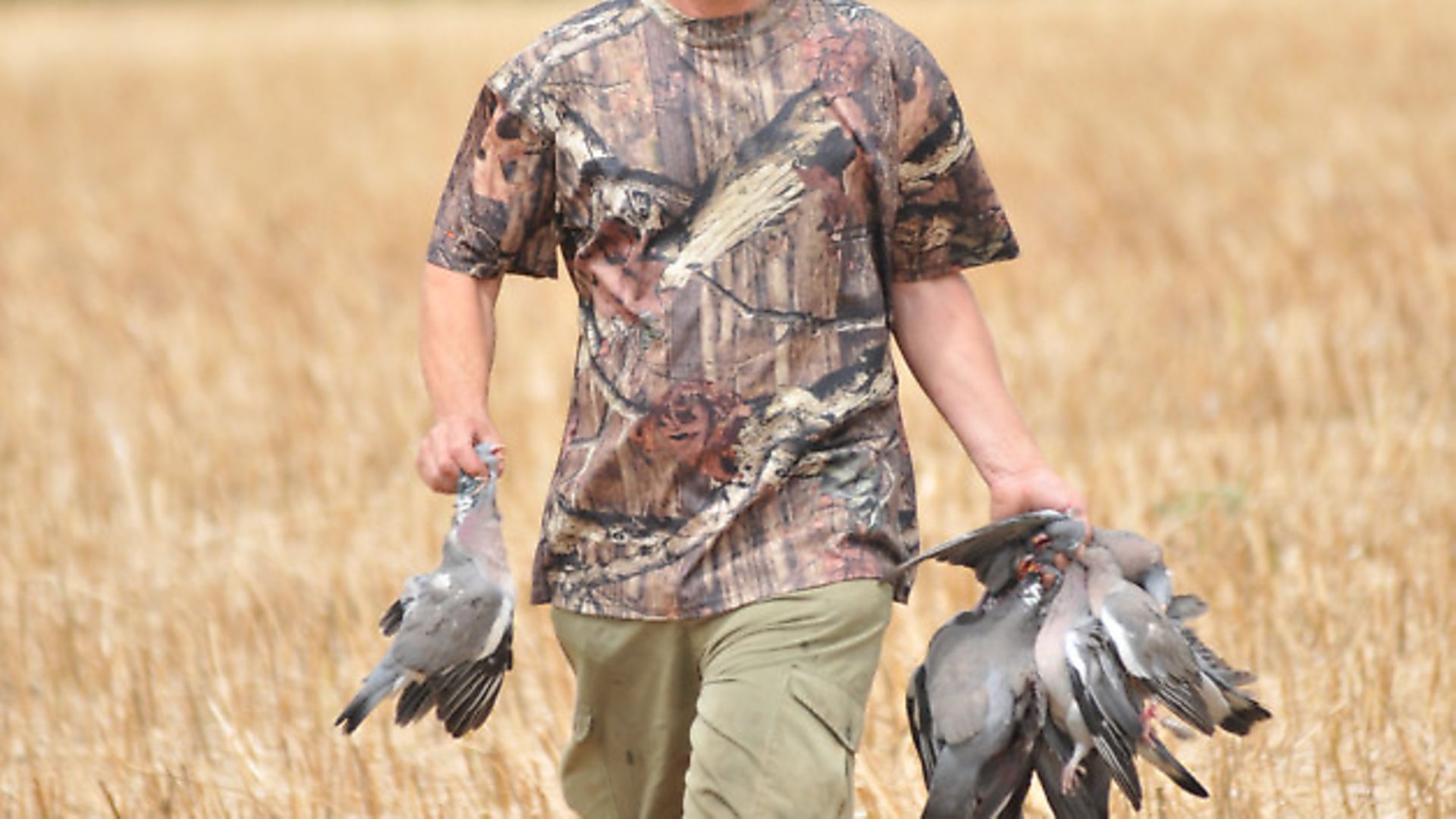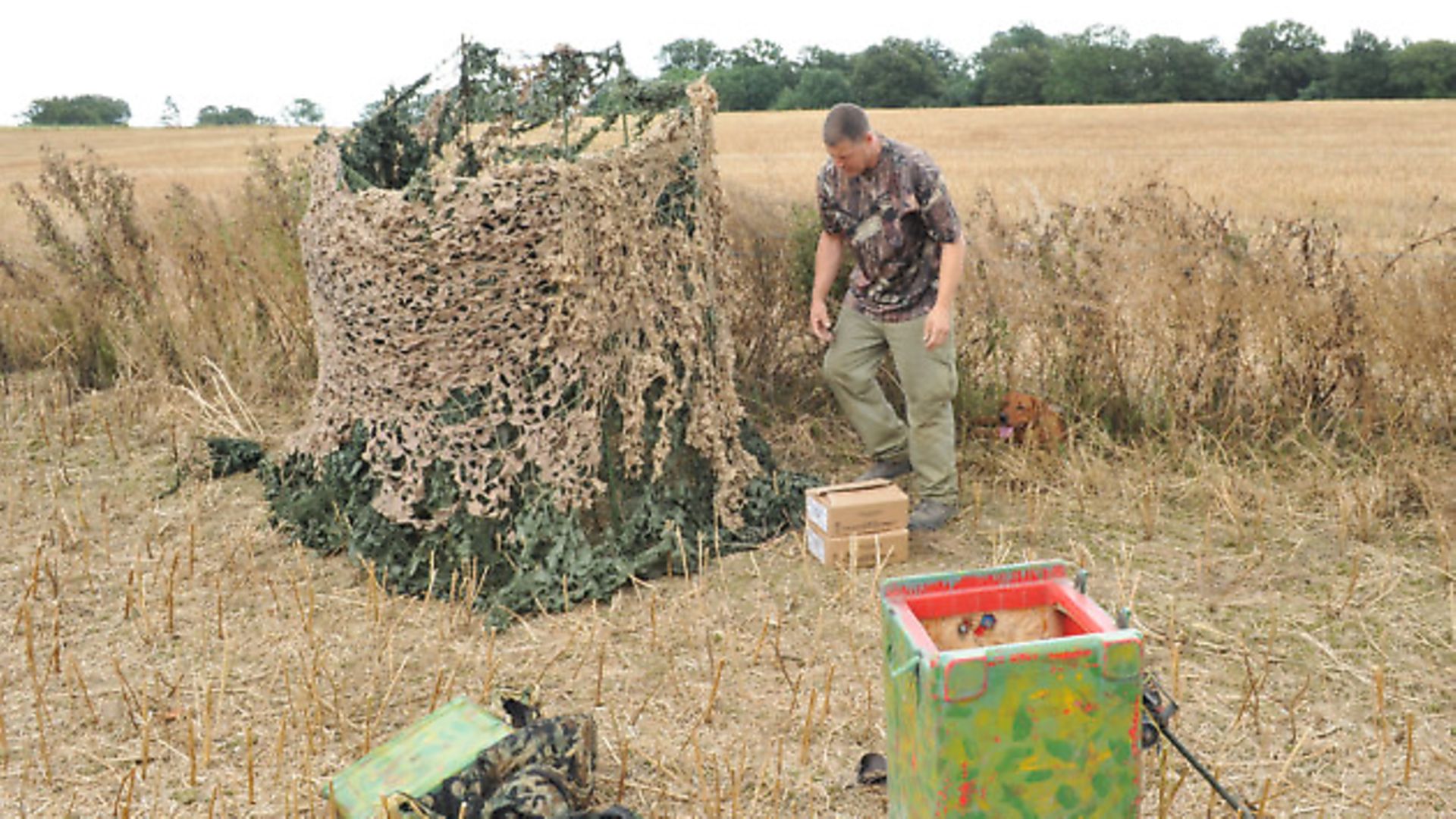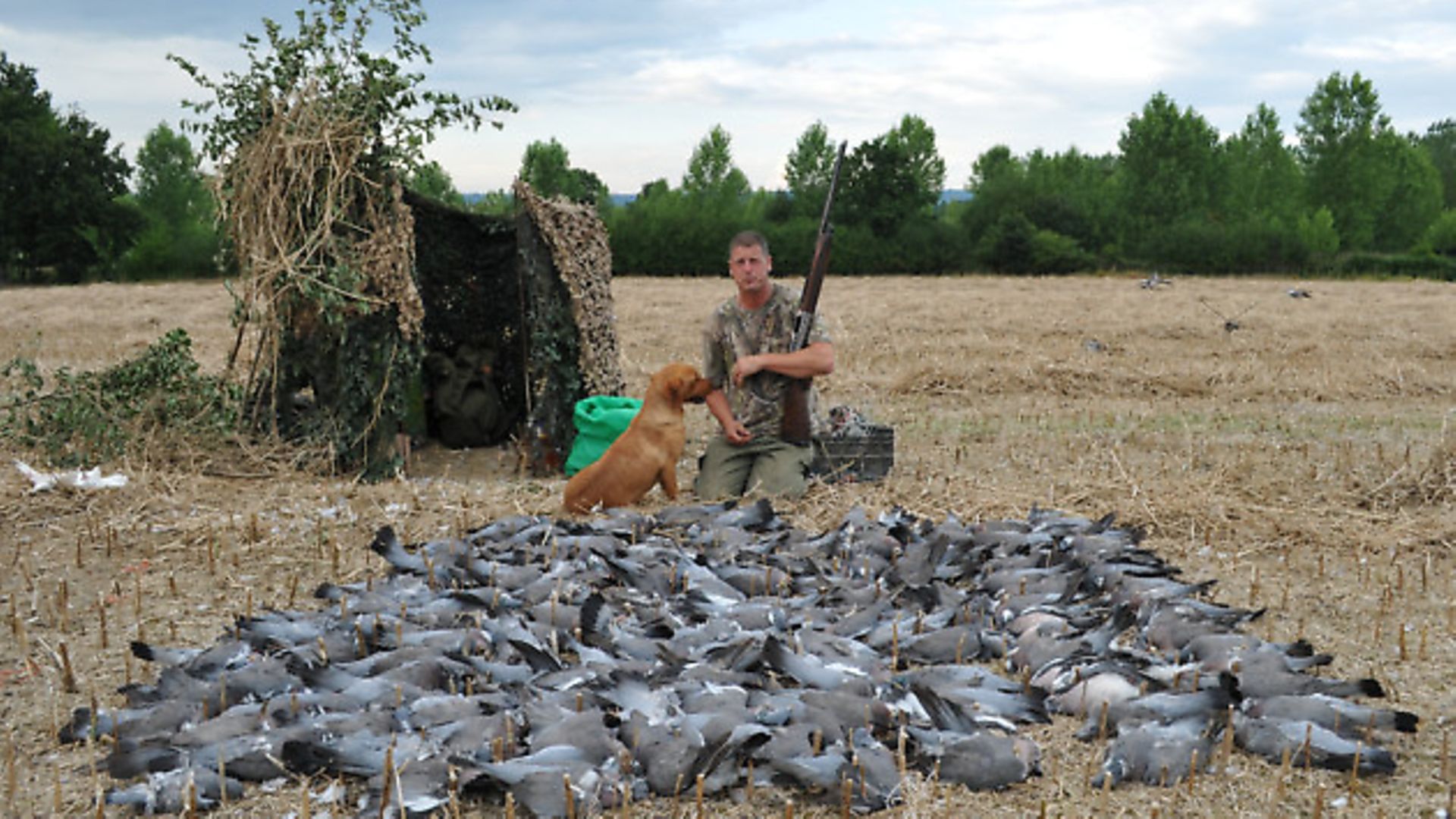As autumn draws on, Andy looks at the pigeon shooting options and what kit might help improve his chances
 credit: Archant
credit: Archant
Most farmers look forward to getting a bit of a rest in the autumn after the chaos and endless hours during harvest. Andy Crow, of course, is looking forward to more trigger time.
There are always a few nice little opportunities during the tail end of harvest. With both peas and bean crops, getting the header set just right on the combine harvester is critical. Locally to Andy a farm had missed the bottom couple of pods on each plant and as a result the field was covered in peas. Absolute bonanza time for the pigeons. It can happen with beans, too, and prove a magnet for the birds.
This kind of accident can’t really be predicted, but if you have people supplying you with good intel, it can be the difference between a big day and a disaster. Over the years, Andy has built up a network of ‘informants’. Farm workers, gamekeepers and fellow pigeon shooters all pool information on what the birds are doing locally, helping to build up a picture of where to be.
Of course it isn’t always predictable, even for the experts: “I cut three runs through the peas a week or so ago and was totally unsurprised to see about 1,500 pigeons on there the next morning,” explains Andy. “Mentally I was planning to have a day as soon as I could. But the morning after I finished combining, there were barely a couple of hundred left. Most seemed to have spread out on to the wheat stubbles again.”
 credit: Archant
credit: Archant
Another thing to bear in mind is the intensiveness of modern farming means that often the farmers chop the straw as they combine and then are ‘discing-in’ and ploughing very quickly after cutting. That might mean that your time frame is pretty slim to get on the stubbles. Make sure you keep in touch with your landowners – it’s easy enough for them to send you a quick text to let you know what their plans are. However, be aware that farmers’ plans can change very quickly due to weather, mechanical breakdowns and such like – so be sympathetic if your sport doesn’t come top of his priority list. On the plus side, as possible feeding sites diminish in number, the birds will get concentrated, and this can lead to bumper bags when everything comes right.
Once you have identified your location, utilising bales that are already out in the field is a great way of getting a hide up that won’t startle the pigeons. They are used to seeing these shapes by now so won’t react – as long as you aren’t skylined. However, Andy is more than happy to build a hide out on its own on a bare stubble. “I might, if I have the time, do that the day or so before I shoot to give the birds a look at it, but I have still had massive days after making a stand-alone hide in the middle of a field. Likewise I have had success with hides tucked right in the hedge that are almost impossible to spot from 50 yards away! Again, ensuring the hide is high enough at the back to stop you from being silhouetted is the key in my opinion.”
Andy was out and about at the CLA Game Fair and enjoyed catching up with fellow shooters. “It is really nice to meet people at the shows who read the stories in the magazine or watch my shows on the internet. It is great to see how enthusiastic they are about pigeon shooting and even better when they tell me that they have picked up some advice or tip from me that has helped improve their shooting. That is the biggest motivator for me: I could happily carry on doing what I do, but helping other people to get more enjoyment from their shooting is very satisfying.”
It is perhaps no wonder then that Crowman is in demand from the shooting trade when it comes to evaluating new kit. As somebody who has made much of his own gear over decades in the field, from hide poles to whirlies, he has learned a thing or two about what works and what stands up to the rigours of serious field use. He has also been surprised by the odd invention so keeps an open mind about new kit.
 credit: Archant
credit: Archant
There are a few products that Andy is hoping to trial in the near future. “The humble flapper continues to evolve and I am looking forward to trialling the latest version from Flightlines – the FF4. It now features a faster wingbeat, variable speed and timer, plus can be used with a variety of real or imitation birds making for a really versatile bit of kit.”
“I was also chatting to the guys at A1 Decoy and they reckon that supersized ‘magnum’ decoys are going to be the next big thing. Apparently it’s really successful in goose shooting and that there is no reason to think it won’t be just the thing for woodies. I’m going to take some convincing on that one but never say never!
“I’d be fascinated to hear from other shooters around the country what makes up their kitbag essentials? Is there a special bit of gear that works a treat in a particular area? A tactic that has been devised for a certain crop or a certain time of year? A time or money-saving tip that works for you? Drop me a line at the usual magazine address or send an email and we will share the best ideas in an upcoming issue.”